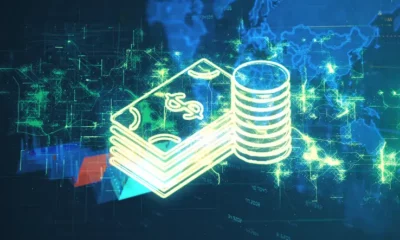Banking
What does the future of global payments look like?

What does the future of global payments look like?

The world of international payments is changing. Fast. With some of the biggest changes happening at the very core of the payments infrastructure to enable speed, open access and standardisation, it is likely we could soon be looking at a very different network.
While it has always been a community business, with participants collaborating and competing at the same time, new entrants are beginning to expand this community beyond traditional banks. These tech-first companies are pushing the industry to achieve near instantaneous payments, revolutionising the industry.
How is the market changing?
Over the last few years there has been wave of modernisation across the payments participant chain, driven by developments like the smartphone and fintech digital wallets. This has resulted in faster, open and more standardised payments and additional value-add services. For example, the increased data banks can collect on users can help boost credit provision to people who previously couldn’t access it.
Much of this change has been driven by the implementation of the ISO20022 regulation, which has created a global standard for structuring data used in financial transactions. Ensuring everyone shares and stores data in the same way means data is richer and can offer more insights to financial institutions than before. Combined with improved analytics capabilities brought about by emerging technology such as AI, organisations are becoming more efficient at handling receivables and reconciliation, monitoring for financial crime and managing risk. As the market continues to evolve, firms looking to stay relevant will need to take advantage of these extra value add services.
Beyond improved data gathering, various payment networks are also emerging, all of which aim to reduce friction in cross border payments for a more open and inclusive environment. For example,
India’s UPI has been linked with Singapore’s fast payment system, allowing consumers in both countries to pay in the other using their domestic platform. One cross-border payments system that is often compared to the United Payment Interface (UPI) is the Real-Time Gross Settlement (RTGS) system. While there are similarities between UPI and RTGS, it’s important to note that they serve different purposes and operate in different contexts. In addition, RippleNet, a global payment network using blockchain technology and digital assets, such as XRP, to enable real-time settlement and liquidity management for cross-border payments. Since its inception in 2012, RippleNet has processed[1] $30 billion in up to 20 million transactions.
Fintech providers are also offering consumers simpler and faster ways to send money. For instance, companies like Bolt, AeroPay and Stripe have been providing retailers with more ways of taking payments, and encroaching on ground that was traditionally held by banks.
How should banks respond?
As the payments market changes, banks are facing a relentless battle to keep up with their more nimble competitors. Encumbered with legacy technology, many now face a mammoth task of modernising their payments systems and embedding the changes happening in the market. With consumers now expecting a high speed, high transparency, low-cost and low-friction payments experience, the race is on if they want to avoid losing customers.
However, traditional banks should not see this as a fight with the new wave of entrants. Instead, they should be looking to partner with them to combine the best of both worlds. For example, several countries’ central banks have partnered with technology firms to develop new digital currencies, allowing both businesses and individuals to benefit from direct access to the central bank’s resources, and enabling faster transactions. By working with organisation that can provide the technological expertise banks lack, they can put themselves in the best position to stay at the forefront of the industry rather than play catch up.
Finally, banks should focus on making payments invisible. For example, companies like Uber and Amazon make the payments so embedded in the activity that they don’t feel like a step in the process of completing a transaction. Banks can support this by offering APIs to retailers and other businesses to help create a frictionless customer journey, meaning payments will no longer occupy the centre stage in daily lives.
So what’s next for banks
As the payments market continues to undergo its renewal it is vital that banks put themselves in the best position to take advantage of all the benefits it can bring them. By actively engaging with technology providers and other fintech firms, banks can deliver a better, more seamless experience to customers, help businesses cut down on costs and save time when purchasing goods. By using new technology such as AI they can also ensure they remain compliant with regulations around the world and help crack down on illegal payments. Ultimately, those that do not take advantage of these advances risk finding themselves at a disadvantage.

-
Investing2 days ago
7 Tips to Start Your Retirement Planning
-
Trading3 days ago
FBS Financial Market Analysts Forecast Gold Prices to Rise to $2,800
-
Banking3 days ago
The Role of Geopolitical Tensions in Shaping Digital Banking’s Future in Emerging Markets
-
Finance3 days ago
Bandit Network’s Points SDK and Brave Ads Power Astar zkEVM’s Quest Platform “Yoki Origins”







